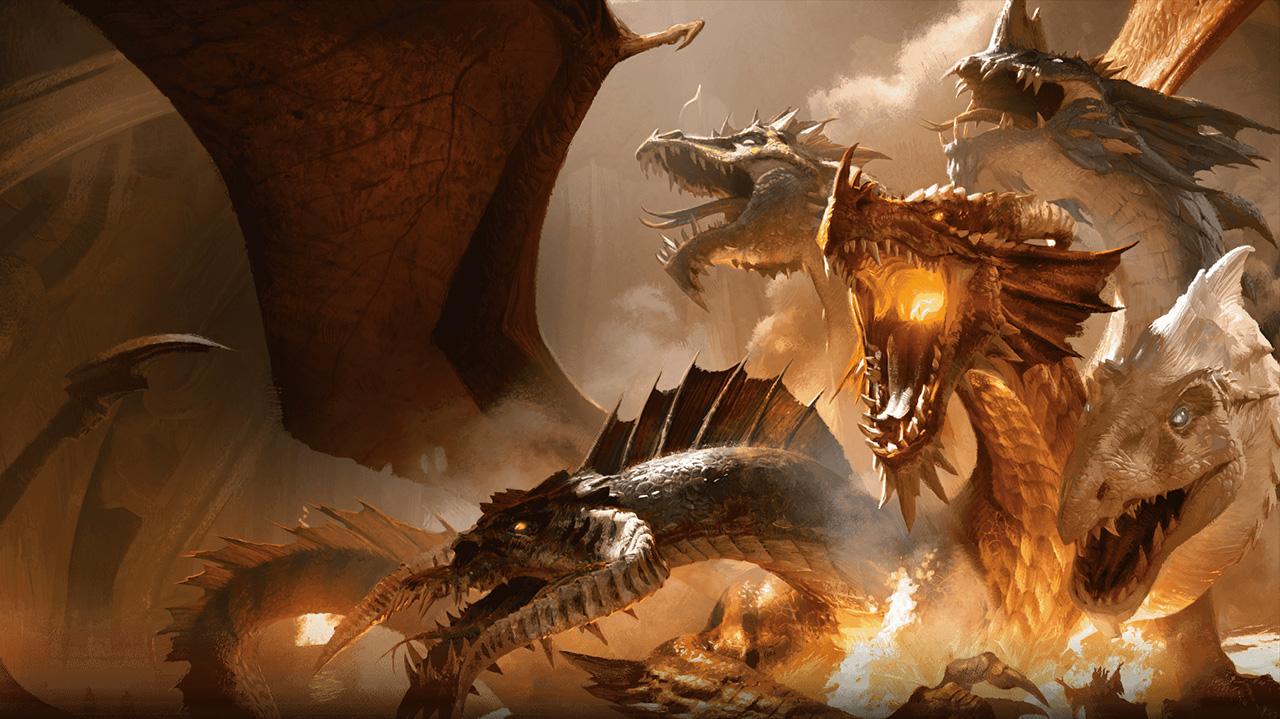Guest Blog: An Introduction to Lines and Veils
Safety tools have been a major part of the tabletop scene the past few years. It has been wonderful(...)
.jpg)

My first D&D books were hand-me-downs. A friend's older cousin passed them down to me after I showed an interest in fantasy novels. They must have been hand-me-downs to him, too, because they were pretty old--a Player’s Handbook and a Dungeon Master’s Guide for Advanced Dungeons & Dragons. The title page placed the copyright at 1979, and this age, coupled with the changing-of-hands ritual through which I acquired them, gave them a sort of sacred air. I knew there were other versions available--4E was out at the time, and I haunted comic book shops enough to know how to get my hands on the books--but I was a kid without much money to spend, and these books were ready and just begging to be played with.
There was one particular passage in that Dungeon Master’s Guide that stood out in my memory; an almost full-page digression titled “The Monster as a Player Character,” in which the author broke from the more cut-and-dry material to lay out how D&D was “humancentric,” and what to do if a player tried to challenge that assumption by playing as a monster, or, more specifically, a dragon. I mean, it’s right there in the title. From the book:
“This is done principally because the player sees the desired monster character as superior to his or her peers and likely to provide a dominant role for him or her in the campaign.”
Later on, the author gives tips on how to discourage a player set on playing as a dragon:
“... Point out the natural bent of dragons is certainly for their own kind -- if not absolute solitude -- so what part could a solitary dragon play in a group participation game made up of non-dragons? Dragon non-player characters, yes! As player characters, not at all.”
Little did I know, sitting on shelves in new editions, there were more modern solutions to this problem already out there, including the dragonborn race. Thinking around this kind of mindset had evolved dramatically in the community surrounding the game.
But this passage stuck with me. It was so rich in ideas about what a dragon really was, definitions I had never considered. It planted a flag and laid out the reasons why they made such perfect antagonists that they demanded to be half the title of the game. I knew, right then and there, I had stories to tell about powerful, ancient enemies.
At that moment, I realized what I loved about dragons.
-jpg.jpeg)
The Blueprint. (The Hobbit, J. R. R. Tolkien)
Iconic
Let’s start with the most basic element.
I already hit on this, and it’s such a simple thing that to many it probably seems too basic to point out, but it’s worth repeating because it matters so much: Dragons are iconic. Not only in the realm of fantasy, but elsewhere in culture. The dragon is a symbol, something to fear, an enemy that’s both mighty and, almost more importantly, smart.
So many big beasts are so often portrayed as unintelligent, to be outwitted and therefore outmatched by smaller opponents. Dragons, though, has no such obvious weakness, and they know it. They’re smart and unknowably ancient, and wise to a player’s tricks.
Instead, when players finally find themselves face-to-face with a dragon, they need to exploit other fatal flaws to defeat them. The dragon provides a genuine challenge. Their weakness so often lies in their confidence, a laziness or sluggishness that comes from never being seriously challenged. Or, sometimes, their weakness lies in their greed.
Avarice
It’s interesting that the Advanced D&D manual spills so much ink explaining how dragons are so different from players, because, as with most great villains, there are echoes of the heroes’ motivations at the heart of the dragon. Players go adventuring, at least on some level, because they want to seek out and accumulate wealth, hoarding gold almost certainly beyond their need.
That motivation lines up pretty well with the classic image of Smaug slumbering away on top of a literal pile of treasure, and it also provides a reason why players might seek out and attempt to slay a dragon. They have what players want, and a lot of it.
So the relationship between heroes and dragons is less of a clear-cut dichotomy than it might seem. Rather, dragons are the perfect enemy for a group of player characters because they line up so closely with the worst (or, rather, most base) of the players’ motivations. By reflecting this greed back, dragons provide those same players with an interesting opportunity to probe their own intentions--are they called to a higher quest than simply accumulating wealth? And if not, what gives them the right to enter the dragon’s domain and challenge them?
By the time players advance enough to tackle a dragon, they’ve probably discovered enough about their characters to have a good answer to these questions. And getting a grasp on the answer to those questions is often the final step they need to take in order to elevate a character into a capital-H hero.

Sometimes, a dragon is actually many, many dragons. (The Rise of Tiamat, Wizards of the Coast)
Aspirational
I say “final step” because the dragon, with some exceptions, is notably absent from campaigns until pretty late in the game--and that absence is felt. Like I said above, it’s right in the title. Dragons are something players expect to encounter, and this anticipation provides GMs with a natural hook to keep their players enraptured. Roleplaying games often have deep elements involving advancement--not just for the player, but for the character, as well. They’re about getting better, and working towards a goal.
Slaying a dragon, taking on an iconic, nearly unstoppable force of nature, is such a naturally compelling goal that, many times, it’s enough. A great campaign will offer compelling narrative hooks beyond facing down a single foe, but there’s something so primal and innate about chasing a foe this strong that for many players, it’s more than enough of a hook.
I still have those D&D books on my shelf, nestled comfortably between my 5th Edition Box Set and the manual for Troika!. I pulled them off the shelf to grab the quotes for this piece, even. Since those books came into my possession, I’ve gotten the opportunity to tell so many of those stories I wanted to tell--of heroes, haughty beasts, of good & evil, and, yes, of dragons.
In that way, I’ve built my own little trove, not filled with wealth, but instead filled with something more valuable: Stories. And that, beyond anything else, is what dragons represent to me. They’re a symbol of adversity, something for players to overcome, something they can hope to better. Beyond anything else, that’s what dragons represent to me: An opportunity to tell a great story with friends.
The dragon in the header banner is from Sunset Dragon's Chromatic and Metallic Dragons pack. The city tiles are from David Hemenway's Build Your Own City Walls. Both are great for assembling your own dragon sieges.

Luke
SOCIAL MEDIA MANAGER Luke W is a writer and social media manager living in the Midwest. His writing has appeared in Vice, Paste, Game Informer, and The Hard Drive. He tweets at @urzashottub, mostly about his lunch.
Safety tools have been a major part of the tabletop scene the past few years. It has been wonderful(...)
I love sci-fi horror, and I love a good flow chart, so you can imagine that Mothership is right up(...)
GM: “So are you sneaking in or are you going full bear?”